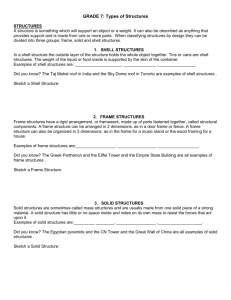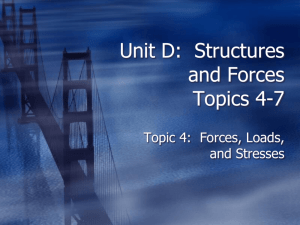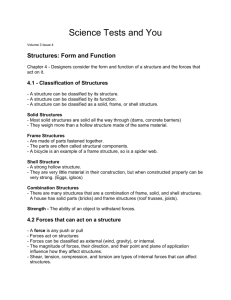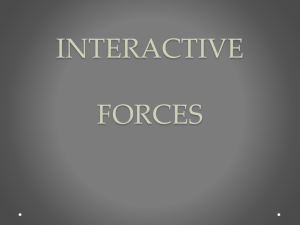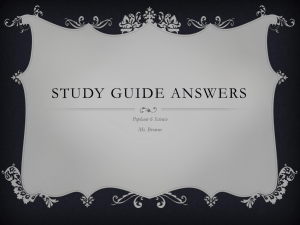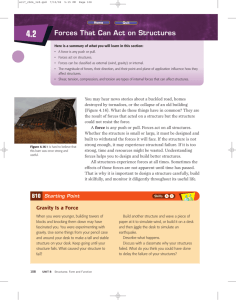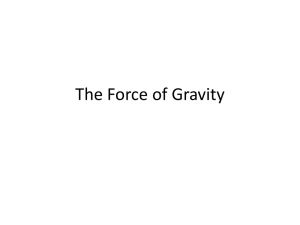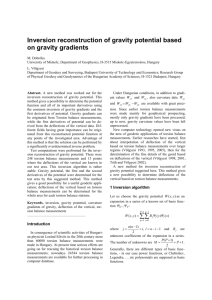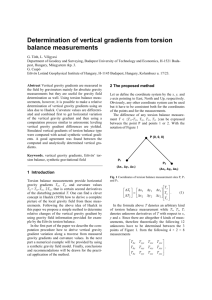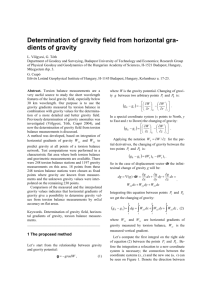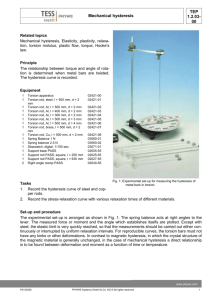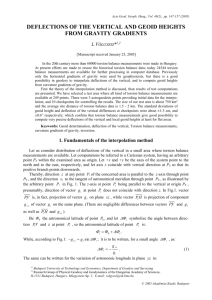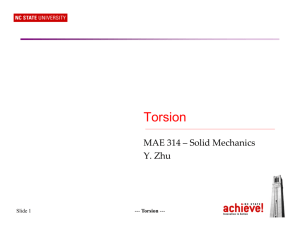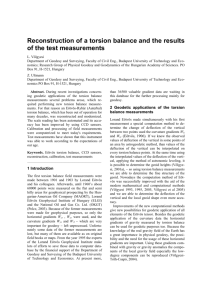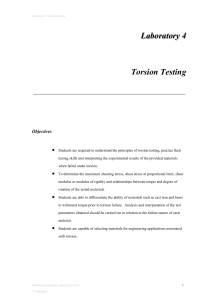structure magnitude
advertisement
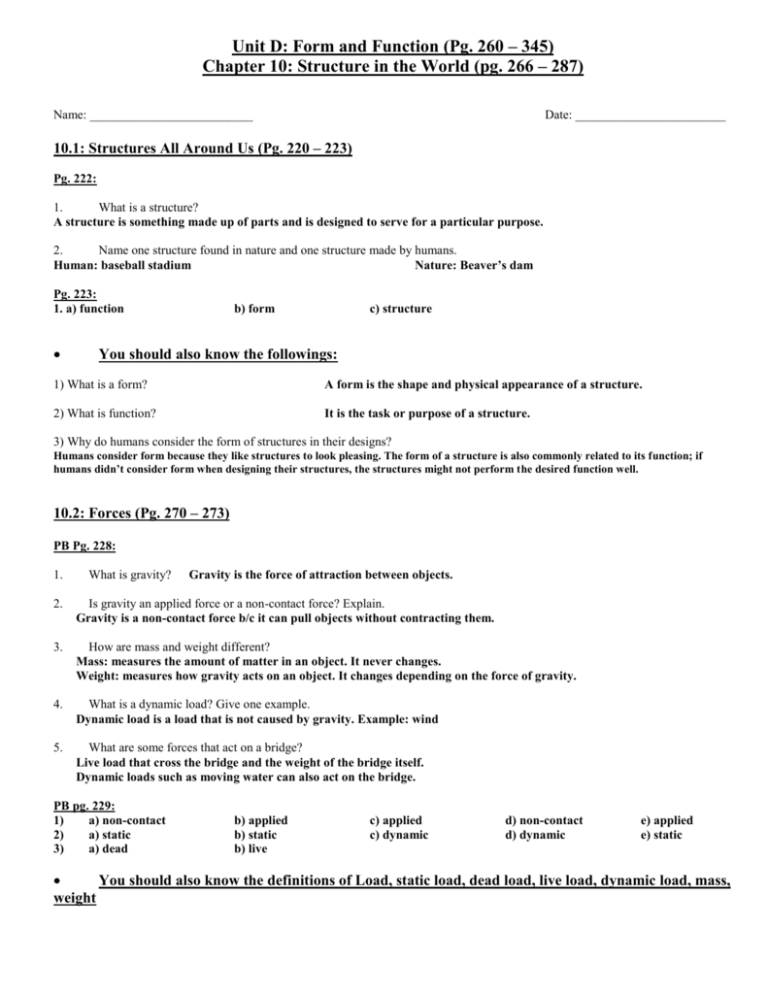
Unit D: Form and Function (Pg. 260 – 345) Chapter 10: Structure in the World (pg. 266 – 287) Name: __________________________ Date: ________________________ 10.1: Structures All Around Us (Pg. 220 – 223) Pg. 222: 1. What is a structure? A structure is something made up of parts and is designed to serve for a particular purpose. 2. Name one structure found in nature and one structure made by humans. Human: baseball stadium Nature: Beaver’s dam Pg. 223: 1. a) function b) form c) structure You should also know the followings: 1) What is a form? A form is the shape and physical appearance of a structure. 2) What is function? It is the task or purpose of a structure. 3) Why do humans consider the form of structures in their designs? Humans consider form because they like structures to look pleasing. The form of a structure is also commonly related to its function; if humans didn’t consider form when designing their structures, the structures might not perform the desired function well. 10.2: Forces (Pg. 270 – 273) PB Pg. 228: 1. What is gravity? Gravity is the force of attraction between objects. 2. Is gravity an applied force or a non-contact force? Explain. Gravity is a non-contact force b/c it can pull objects without contracting them. 3. How are mass and weight different? Mass: measures the amount of matter in an object. It never changes. Weight: measures how gravity acts on an object. It changes depending on the force of gravity. 4. What is a dynamic load? Give one example. Dynamic load is a load that is not caused by gravity. Example: wind 5. What are some forces that act on a bridge? Live load that cross the bridge and the weight of the bridge itself. Dynamic loads such as moving water can also act on the bridge. PB pg. 229: 1) a) non-contact 2) a) static 3) a) dead b) applied b) static b) live c) applied c) dynamic d) non-contact d) dynamic e) applied e) static You should also know the definitions of Load, static load, dead load, live load, dynamic load, mass, weight 10.3: Classifying Structures (Pg. 274 – 276) Name: __________________________ Date: ________________________ Check Your Learning: Read Pages 274-276. Answer the following questions: 1. Define the followings: Solid Structure: An object that uses solid construction to support loads. Frame structure: A network of parts that supports loads. Shell structure: A hollow structure with a curved shape providing high strength and rigidity. 3. List the advantages and disadvantages of the three basic forms of structures (solid, frame, or shell) Solid Structure Strong but heavy and uses a lot of materials. Frame Structure - It uses fewer materials and is lighter, but may not be as strong as a solid structure; - It can be difficult to construct, since it must be supported as it is being build. Shell Structure It can enclose an empty space without needing supports. However, shell structures tend to be weak and may not support very much weight. 10.4: External and Internal Forces (Pg. 277 – 280) Check Your Learning: Read Pages 277-280. Answer the following questions: 1. Classify these forces as external or internal: shear: gravity: torsion: the force of the floor on your feet when you are standing: Internal Force External Force Internal Force External Force 2. a) You are lying in bed: List the internal force that are acting on the mattress. Compression Force b) What is the external force acting on the mattress? Gravity (your weight) a) b) c) d) 3. Explain the difference between the direction of force and the plane of application of force. Use a diagram to help you. The direction of the force is the direction in which the force is acting. The plane of application of the force is the two-dimensional imaginary “sheet” that the force lies in. 4. Figure 8 (page 280) shows a solid block-shaped structure in four different situations involving applied forces (the arrows). Name the internal forces in each diagram. a) Tension b) shear c) compression d) torsion 5. Define the followings: External force: A force acting on an object or structure from the outside. Internal force: A force acting between two parts of body. Tension: An internal force pulling the particles of an object apart. Compression: An internal force that presses or squeezes the particles of an object together. Torsion: Internal twisting forces created in an object as a result of a twisting motion being applied to the object. Shear: Forces acting in an object as a result of pushes and/or pulls in opposite directions; usually results in rips or teas in an object. Chapter 10 Review: (pg. 286 – 287) Name: __________________________ Date: _____________________ 1. What is a structure? A structure is something made of parts put together for a particular purpose. 3. Clearly distinguish between function and form. A structure’s function is the purpose for which it was constructed. Its form is its physical appearance. 4. Complete the following sentences by filling in the most appropriate word(s): torsion internal dead matter pull push magnitude gravity a) Force is defined as either a Push or a pull. b) Mass is the amount of matter inside an object. c) Your weight is due to the force of gravity acting on you. d) Internal forces act between different parts of the same structure. e) The strength of a force refers to its magnitude. f) A twisting force produces torsion. g) The actual weight of a structure is known as the dead load. 5. Would your mass or weight change if you went to the Moon? Explain. I would expect my mass to stay the same because I would not gain extra matter by going to the Moon. My weight would change because the Moon has a smaller gravitational pull than Earth. 6. What type of internal force is created in a wet dishcloth when you wring it out? Torsion is produced in a wet dishcloth when I wring it out. 9. Describe how tension and torsion are different from one another. Tension occurs when you stretch an object. Torsion occurs when you twist an object. 11. You are being pushed on a swing. Use the terms “point of application” and “plane of application” to describe this activity. When the person pushing you pushes on your back, the place where the person’s hands touch your back is the point of application of the force. The plane of application is the plane that includes that force. 14. a) Freezing rain has caused the electrical wires to sag in your neighbourhood (Fig. 2, pg. 287). Clearly distinguish between deal load and live load in this situation. The dead load is the weight of the wire itself. The live load is the weight of the ice. b) What can electric companies do to help prevent wires from breaking when ice accumulates on them? The electric company could test its wires to make sure that they can handle the tension caused by the combination of the dead load and the live load created by ice accumulation. 19. Answer the key question on page 266: How do structures resist forces? Structures resist forces by being properly designed. Well-designed structures are strong enough to resist forces, such as compression or shear, by transferring those forces to other parts of the structure. A structure must also be constructed with appropriate materials that can withstand the forces it will likely be subjected to.
